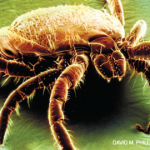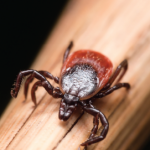Best Practices in Lyme Arthritis Treatment
“Humans are casual bystanders affected by this enzootic disease when bitten by an infected tick,” Dr. Steere says. In an interview, he shares four important strategies to care for patients with Lyme arthritis.
1. Know what to look for: Lyme arthritis is usually characterized by swelling and pain in one or a few large joints, especially the knee. However, small joints, bursae or tendons are sometimes affected, but usually only in one or two locations, Dr. Steere explains.
The major way to confirm the diagnosis of Lyme arthritis is by serologic testing using a two-test approach of ELISA and Western blot. Patients with Lyme arthritis have high IgG antibody responses to B. burgdorferi, as determined by ELISA, with expansion of the response to many spirochetal proteins, as shown by Western blotting. PCR testing for B. burgdorferi DNA in joint fluid is an optional test to help confirm the diagnosis. This test is positive in about 70% of patients with Lyme arthritis prior to antibiotic therapy.
2. Apply a standardized treatment algorithm: “We follow an algorithm for the treatment of Lyme arthritis,” Dr. Steere says.7 This treatment starts with oral doxycycline or amoxicillin for four weeks. “If the joint remains quite swollen, we treat with IV antibiotic therapy, usually ceftriaxone, for four weeks. If a proliferative synovitis persists or worsens after both oral and IV antibiotic therapy, we then give disease-modifying antirheumatic drug therapy.”
He says this algorithm is important to follow for all patients in an effort to treat the infection adequately, but change to anti-inflammatory therapy if the arthritis persists after oral and IV antibiotics. In such patients, persistent synovitis appears to be due to immune-mediated inflammation, with autoimmune features, that persists after spirochetal killing with antibiotic therapy.
3. Follow established testing protocols to track treatment response: After spirochetal killing occurs, Dr. Steere says the IgG antibody titer to B. burgdorferi declines gradually over a period of months. However, the ELISA test usually remains positive for years, albeit at lower titer. The Western blot, a non-quantitative test, does not change much after treatment. Accurate determination of the decline in titer requires testing longitudinal samples in the same assay, but in most instances, previous samples are not saved. The PCR test may also remain positive for weeks or maybe months after spirochetal eradication.
“There are currently no biomarkers that clearly distinguish the infectious from the post-infectious phase of the illness at the time of transition from one phase to the other. However, there are tests that can help give us clues,” Dr. Steere says.


